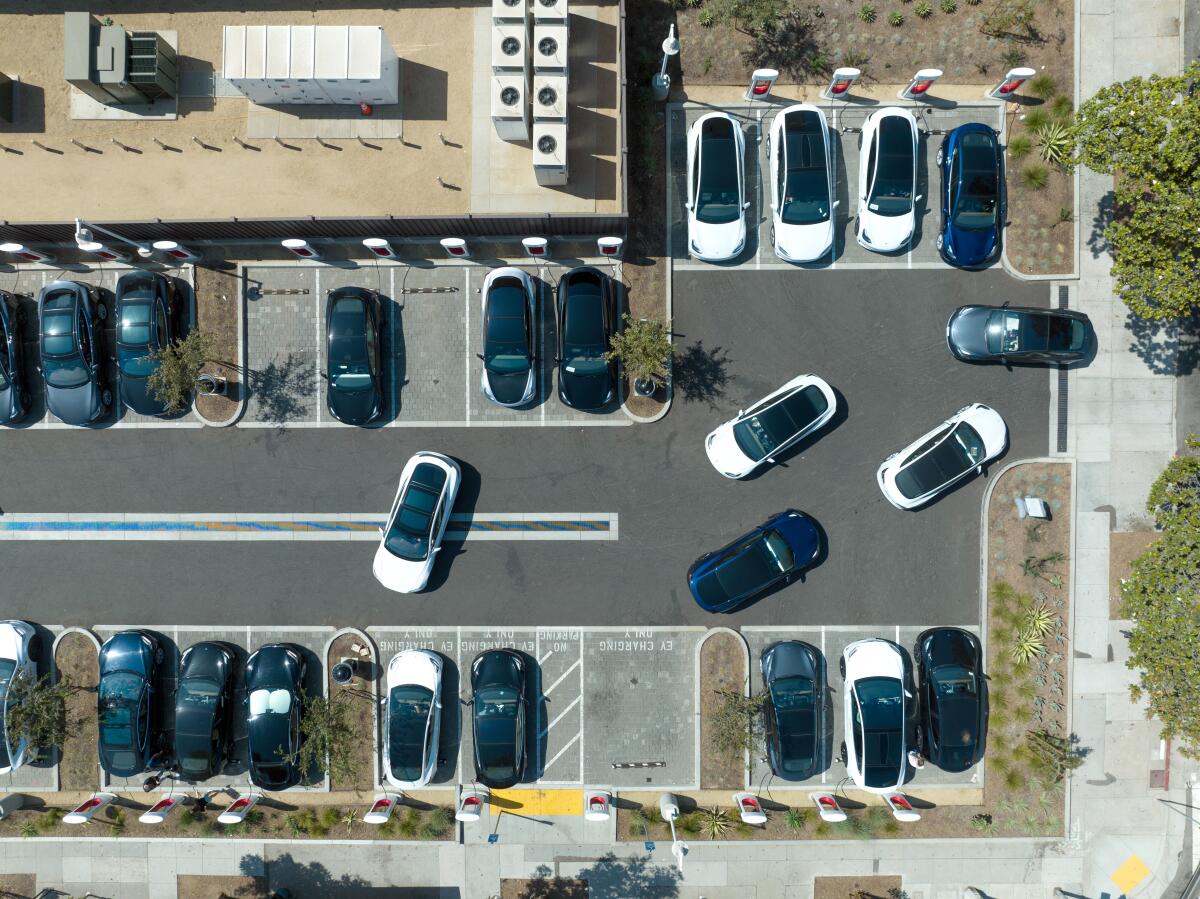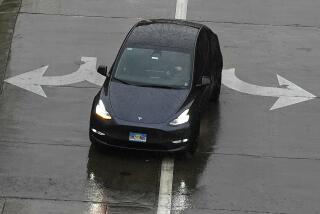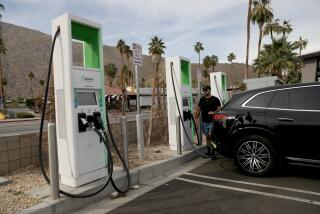Op-Ed: Think bigger. Switching to electric cars isn’t enough

It might feel like the easy solution — just replace your gas-guzzling SUV with an electric SUV, and if everyone does that, eventually we’ll solve climate change. You can see why California regulators decided last month that by 2035, all new cars sold in the state must be electric. After all, car exhaust is the single biggest source of greenhouse gas emissions in California, so surely switching gas-powered cars to electric ones will make a huge dent in fighting climate change.
Except it doesn’t. For starters, electric cars still pollute. They don’t have tailpipe emissions, but the process of producing and transporting them creates pollution. According to the International Energy Agency, the average gas-powered car will create 41.9 tons of CO2 emissions from the point it’s manufactured until it’s retired, in contrast to 21.1 tons of CO2 from an EV. In other words, while the average EV will pollute about 50% less compared with a gas-powered car, it’s still highly polluting.
There’s also pollution, and other harms, that come before the manufacturing stage, especially in the intensifying global competition to procure rare earth materials (concentrated in China) for EV batteries. In the past, we have often been dependent on the Middle East for oil. Do we want to create a future in which we’re again dependent on countries that may not be aligned with our values for required materials for our transportation system?
The second issue is power capacity. During the first week in September, California faced a historic heat wave, and alerts were issued asking EV owners to not charge their vehicles during peak times. And this is at a time when only 1.9% of cars operating in California are EVs. What happens when that number is 5%? Or 20%? Without a dramatic increase in power production from clean sources, it won’t be possible to supply power to all the EVs without ramping up use of coal and natural gas for electricity generation, increasing emissions from fossil fuels.
There are some bottom lines that are true whether cars are powered by fossil fuels or electricity:
Electric cars are just as dangerous for people outside the car; if you get hit by a 9,000-pound electric Hummer or a 7,000-pound gas Hummer, you’re dead either way. EVs are just as dangerous for pedestrians and cyclists as their gas-powered cousins, and rushing to adopt them without changing the way we use space on our streets is a recipe for a continued upward trend of pedestrian, cyclist and driver deaths.
Electric cars take up the same amount of space as gas-powered cars; even if we could wave a wand and convert every car on the road today to an EV, traffic would still be miserable, and the demand for driving and parking space would continue to suck the lifeblood out of our cities.
Additionally, car-based infrastructure is very expensive. In 1982, President Reagan signed a law that allocated 80% of the Highway Trust Fund to highways, and 20% to public transportation. This means the country built and maintains an extraordinarily expensive roadway network at the expense of quality high-speed trains and investments in other non-car infrastructure. In 2019, we spent $203 billion nationwide on highways and roads, and that amount is low compared to what is needed. (The highway trust fund doesn’t actually cover all the maintenance costs of highways, and we haven’t raised the federal gas tax since 1993.)
If all cars were electric, we would still spend a disproportionate amount of money building and maintaining car infrastructure, with little left over to build world-class high-speed rail, bus or bike infrastructure inside and between our cities. We would still have outdated parking requirements for developers — which drive up the cost of housing and aggravate sprawl. And because EVs typically weigh more than their gas-powered counterparts, and heavier vehicles wear down the road faster, we will need to spend even more money on maintenance over the long term.
Electric cars aren’t a panacea to solve climate change. They can be part of the solution, but a myopic focus on electric cars as the solution prevents us from seeing so many other ideas. We need a future with fewer cars (electric or not) and much more public transit and bike usage. We need a complete rethink of how we use our public space, and better infrastructure so people can take short trips without using a car.
There are no shortcuts to solving climate change. We shouldn’t assume that once every gas-powered car is replaced with an electric one, we’ll solve the problem — because we won’t. We should instead put our energy into redoing how we use our road space, to truly curb pollution and needless death and bring life back into our cities.
Michael Schneider is the founder of Streets for All.
More to Read
A cure for the common opinion
Get thought-provoking perspectives with our weekly newsletter.
You may occasionally receive promotional content from the Los Angeles Times.










